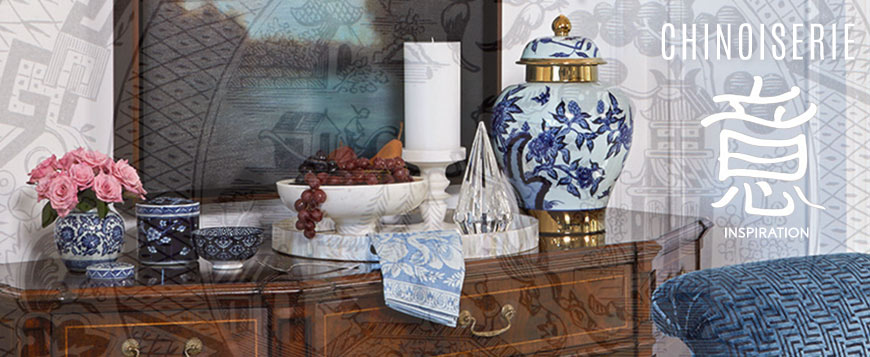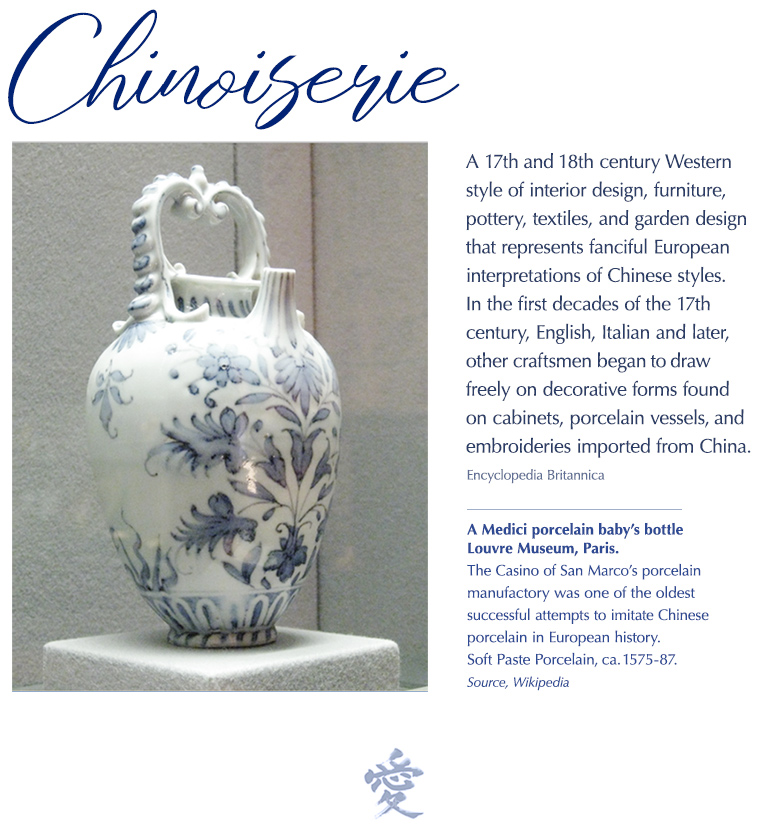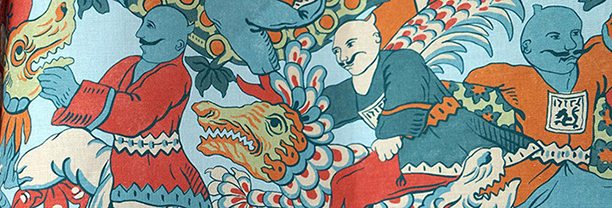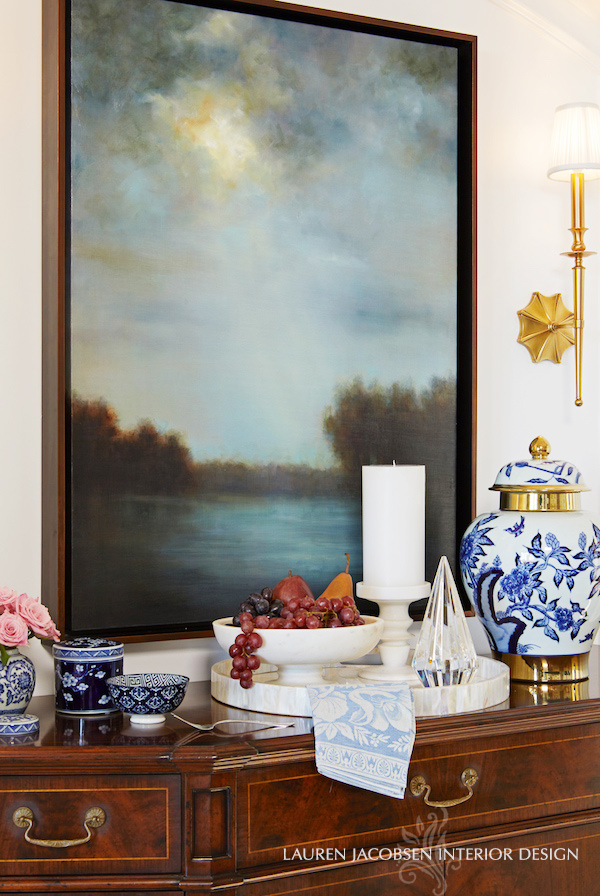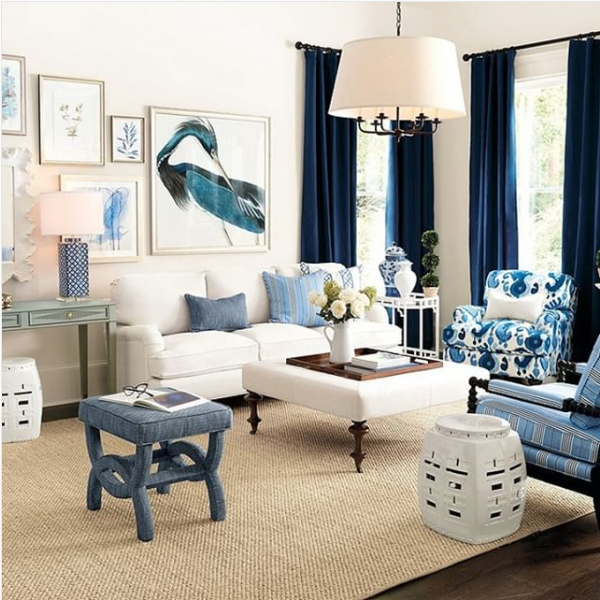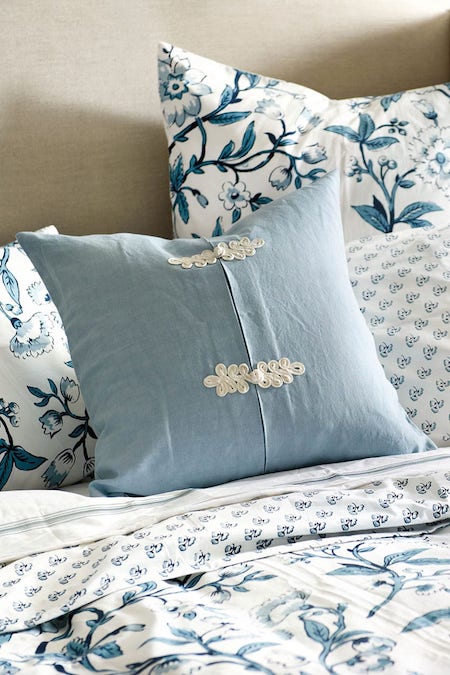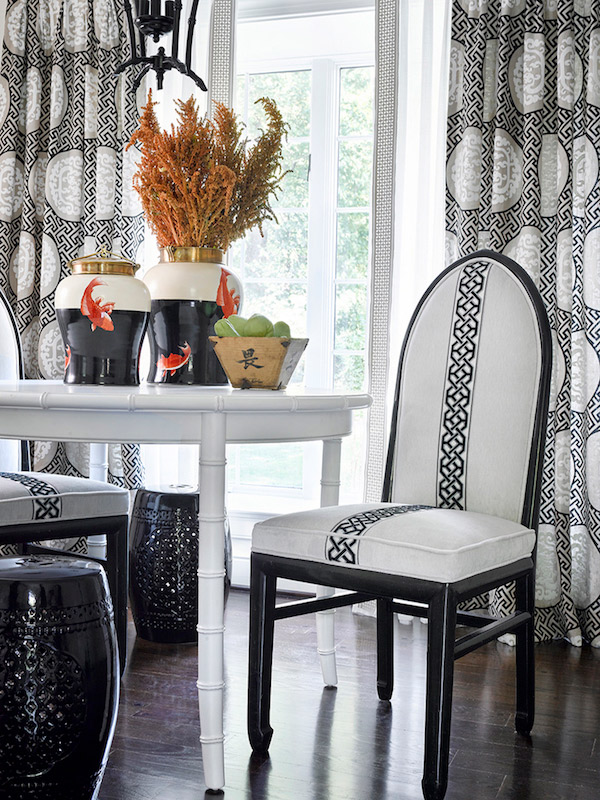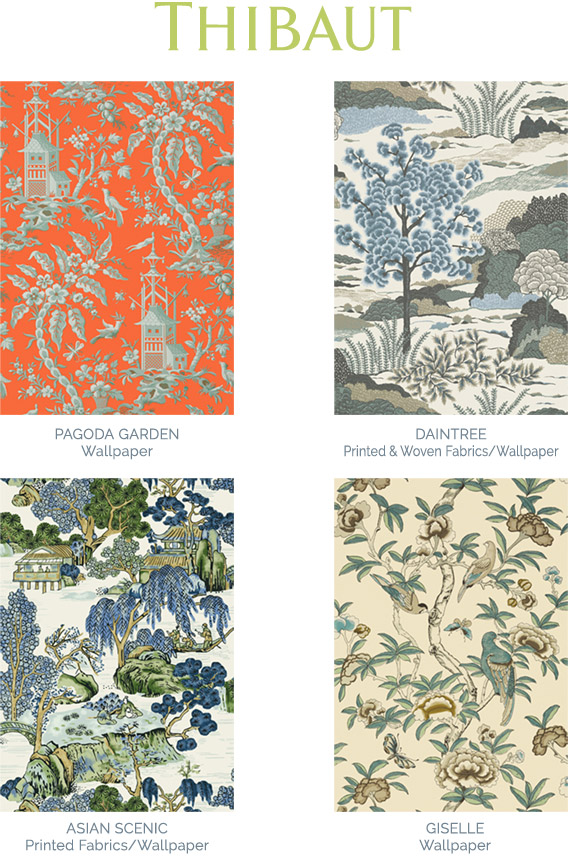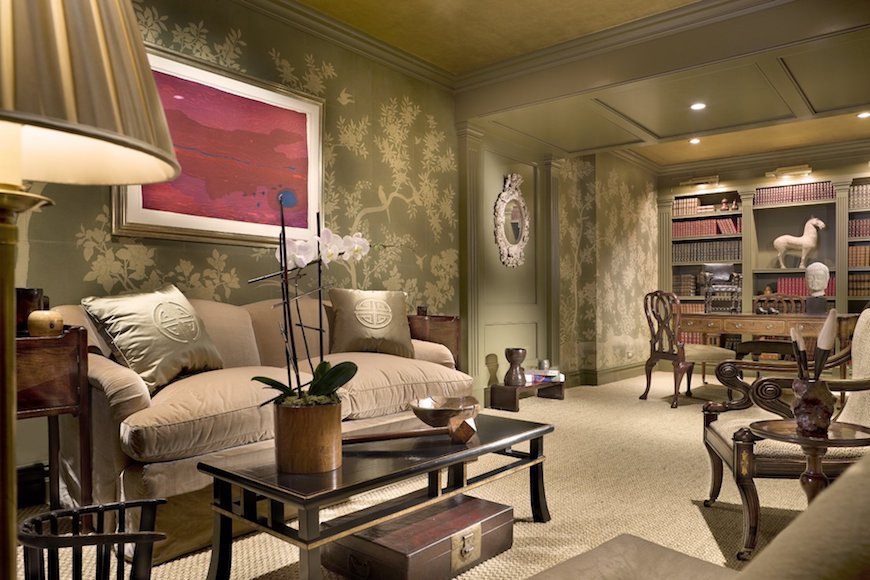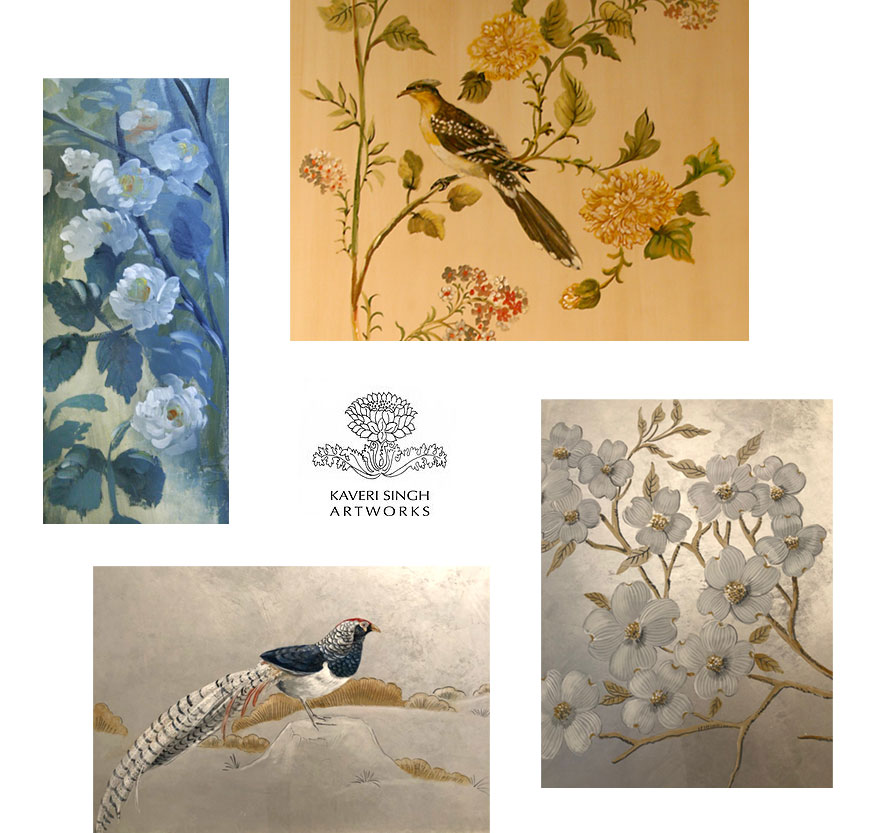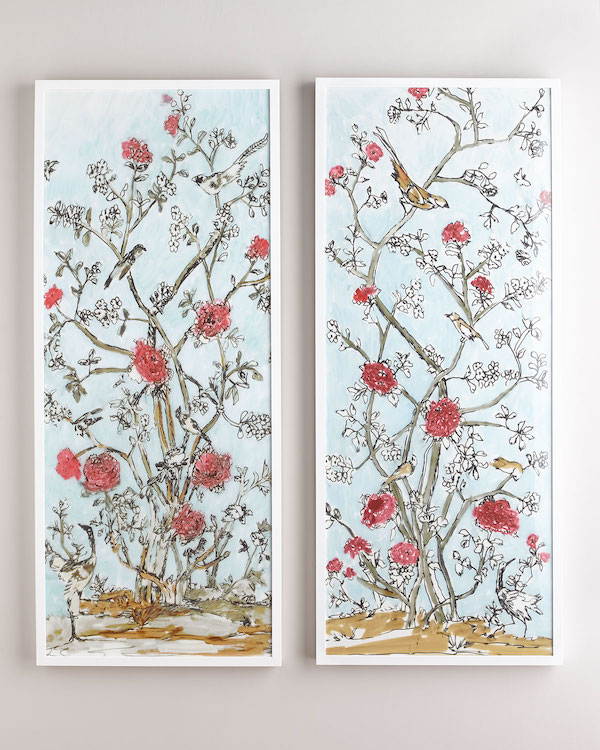Chinoiserie In History And In Our Homes Today
Porcelain is a ceramic made of a fine clay called kaolin. When mixed with other materials and fired at high temperatures, kaolin produces a hard and durable ceramic.
The Chinese began the development of porcelain towards the end of the Han dynasty (25-222 B.C.). Our continued use of the word “china” is still used today to describe porcelain. The coveted blue and white porcelain arrived in Europe during the Ming Dynasty (1368-1644) and the result is known as blue-and-white Ming porcelain, or simply blue and white.
The fascination with Chinese art and crafts on the part of Europeans resulted in a distinctive style of pottery which came to be known as chinoiserie, a French term, when translated, means “in the Chinese style.”
Monarchs and the aristocracy were especially fond of chinoiserie, and it made appearances in the palaces of Louis XV of France and King George IV of England.
“Luxury is in each detail.”
–Hubert de Givenchy
SCALAMANDRE DRAGON DANCE FABRIC
SCALAMANDRÉ
* * *
Now that I have shared its history, what does Chinoiserie have to do with today? Well, everything. From fabrics to furniture, wall coverings, art and accessories, we are in love with the Asian influence within our homes, especially traditional homes.
Three main motifs you often encounter:
Pagodas: used in nature scenes and extremely popular in fabrics and wall coverings
Foo Dogs: actually represent lions in China and are used in pairs, one female and one male, to represent yin and yang, used to guard outside palaces and temples
Dragons: symbolize strength and good luck, a favorite of Chinese emperors
Chinoiserie is one of my favorite design elements; I use it in more traditional projects but I’ve also been known to pair it with contemporary settings showcasing how timeless the designs really are. I love blue-and-white, there is something that is always so fresh, clean and relaxing about it. It is a classic, ‘never fail‘ for decor and accessories. Fortunately, this archetypal style will never end up as a “trend” or become outdated.
* * *
BALLARD DESIGNS
BALLARD DESIGNS
Today we are seeing a resurgence of the design with a more contemporary approach, using more colorful hues and painterly and graphic styles as shown below.
SCALAMANDRÉ
THIBAUT DESIGN
KATHY ABBOTT INTERIORS
GRACIE OLIVE SILHOUETTE
GRACIE
Recently, I have been working with Los Angeles-based and Indian-born mural artist, Kaveri Singh and her team.
A self-proclaimed autodidact, Kaveri studied the brushwork of Rembrandt, Renaissance masters, and the murals of Tiepolo, while in Europe. Her experience working in a ceramic shop in L.A. twenty years ago was the beginning of her transition into the world of interior design and the move from painting ceramics to decorating interiors with her fine art.
KAVERI SINGH ARTWORKS
HORCHOW
Chinoiserie is a style you can use as much or as little as you wish and it will add an artistic fluidity to a room. I love the freedom of the brush strokes in this Chinoiserie Diptych from Horchow.
So elegant.
* * *
My take on Chinoiserie:
Don’t be afraid to mix this style in your home, it fits with so many other styles and periods.

